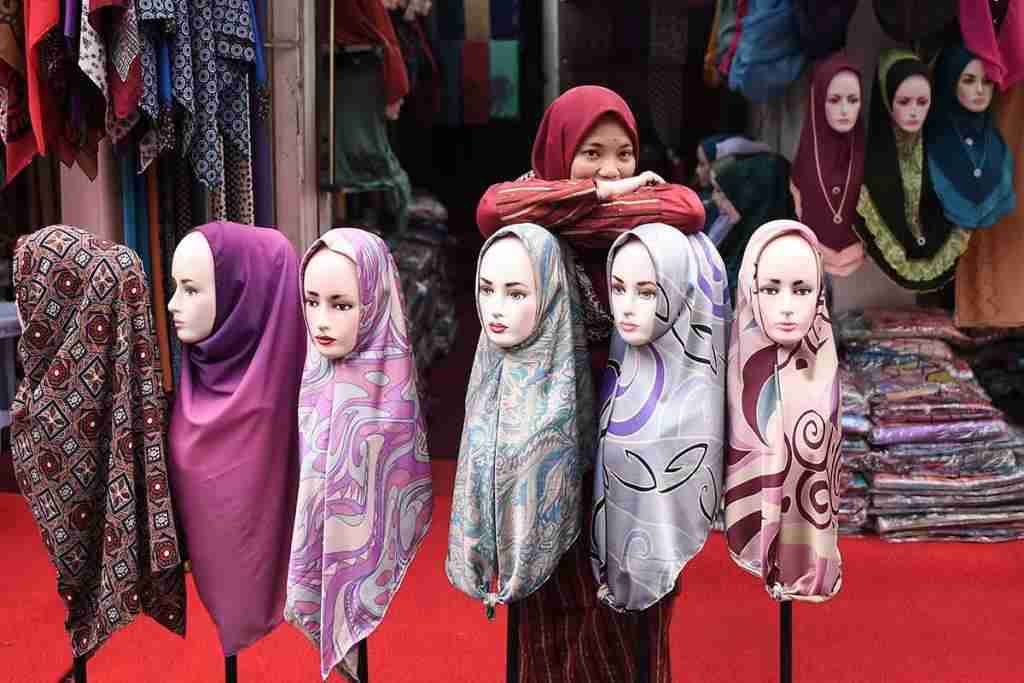News
Why Dress Codes are Different for Women in Muslim Countries

Muslims firmly believe that their manner of dress code show their statement of faith and culture. Public decency is important for them. Islam has no set criterion for wearing clothing articles however there are minimum requisites to follow. The manners they dress are based from the Quran and the Hadith. It is also worth noting that the manner of dressing is just strict when it comes to being exposed in public. They wear comfortably when at their homes or when they are around family members.
Minimum requirements for Islamic/Muslim Dress Code
The minimum requirements include the covering of body (especially the chest). Some conservative Islam traditions require covering the whole body involving the face, whole some women just wear the hijab to cover the head to the chest. Second, the clothing items worn must not be tight because it accentuates the body shape.
They must wear clothing that are loose enough to hide the curvatures of the body. Third, the clothing must be thick enough so that no part of the body will be exposed at all. Fourth, they must not catch so much attention. If all the previous requirements were met but the clothes are catching so much attention or flashy, it defeats the purpose of dressing modestly and decently.
BURQA
Muslim women have varying clothing items worn in different countries. The Islamic law is not strict when it comes to obliging women to put on burqa in public spaces (burqa is an outer clothing attire of some Islamic women which covers their whole body.) While in some areas, some women are required or are used to wearing burqas, other areas have fully or partially banned burqas for safety reasons such as France, Sri Lanka, in some states of Germany, in some localities of Italy, in universities of Egypt to name a few. What is clear with wearing this clothing item is to practice modest, piety, and shows that she is devoted to her culture.
HIJAB
The wearing hijab or the traditional veil used to cover the head also varies from country to country. The point of wearing this also modesty, as modesty is the general dress code for Muslim women. Veiling in Mesopotamia, distinguishes a woman as one with high status in society. Hijab is also required to be worn in front of a potential husband, but not obliged to be worn around family members in a private space. Some countries have also outlawed the use of hijab to cover the face, especially in public areas, institutions, and public schools, such as in Bulgaria, Egypt, Belgium, Switzerland, Netherlands, among others.
In fact, the French senate, according to NPR News, passed a law that banned hijab wearing in public for minors, as well as using a swimsuit that provides a full coverage of the body at recreation areas like public beaches and pools.
It is different in countries like Saudi Arabia, Iran, Indonesian Aceh, and UAE, where wearing of hijab is obliged.
Hijab styles all over the Muslim World
In Pakistan, they use a scar that is loosely draped (dupatta) which allows a small amount of hair to been seen in the front. Colors are usually matched to traditional clothing.
When it comes to trends in fashion, Malaysia is the country to beat. They are up to date on hijab fashion trends, with styles varying to bright or light colors or unique patterns. There are also drapes added for complete hair cover-up.
In Afghanistan, they wear the burqa, which are often dark colors especially blue.
Indonesians are also up to date on Hijab fashion trends, and their hijabs usually ensure full hair coverage and under caps are sown beneath the hijab to make it more distinctive.
In Ethiopia and Somalia, they wear turban-styled hijab for full hair and head coverage. The cloth used is varying in colors and traditional patters.
In Palestine and Syria, the hijab are incorporated with under caps for volume and drapes above the head, and their hijabs does not only ensure full coverage of the head, but the neck and chest as well.
Iran women use the chador, a black colored hijab that cover the head down to the waist and sometimes up to the ankles.
The hijab of Turkish women is sophisticate and stylish. It does not only cover fully, it is also styled in a way that the scarf is tied on one side of the neck.
Read more trending news, Visit: https://www.chiangraitimes.com/trending-new






























